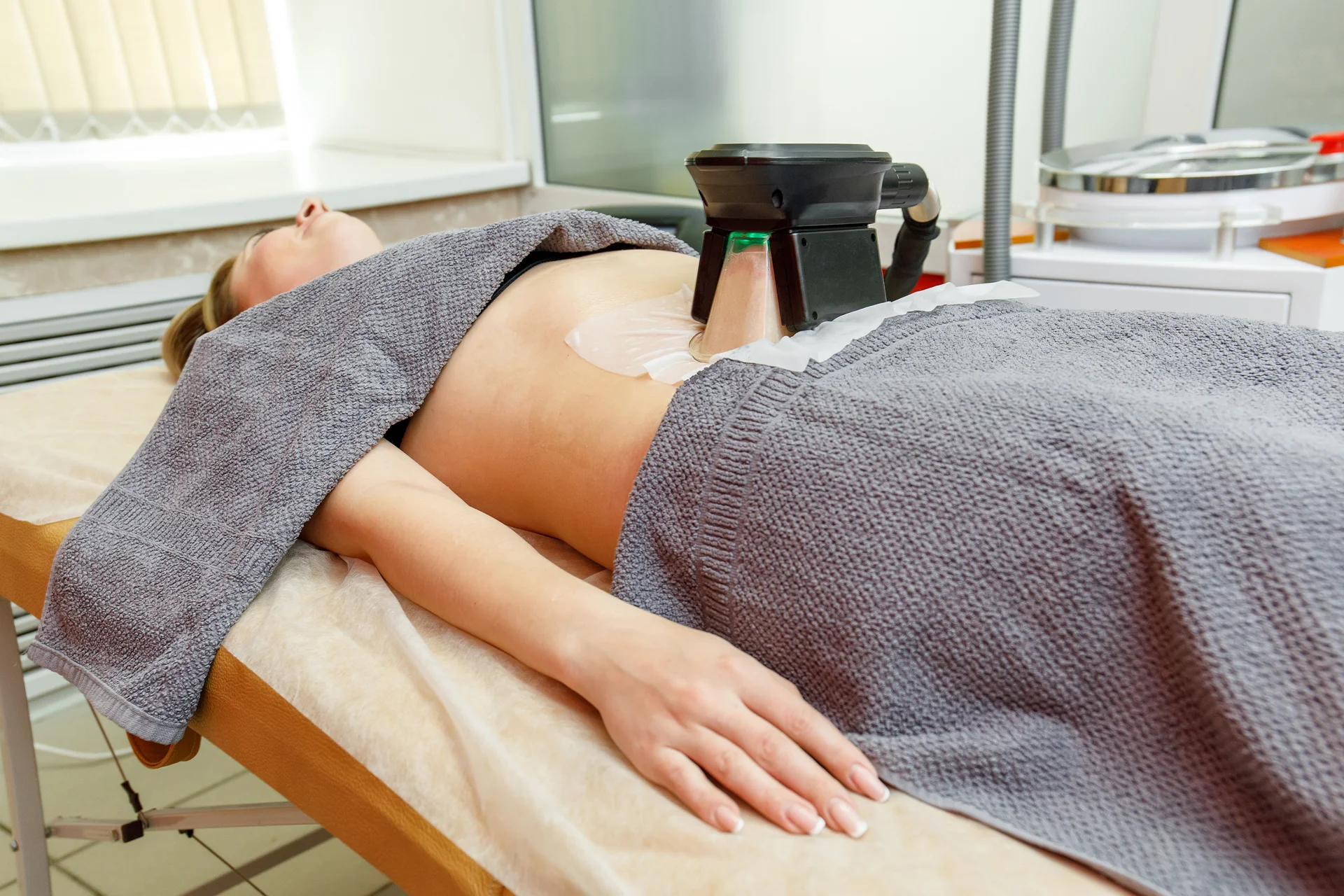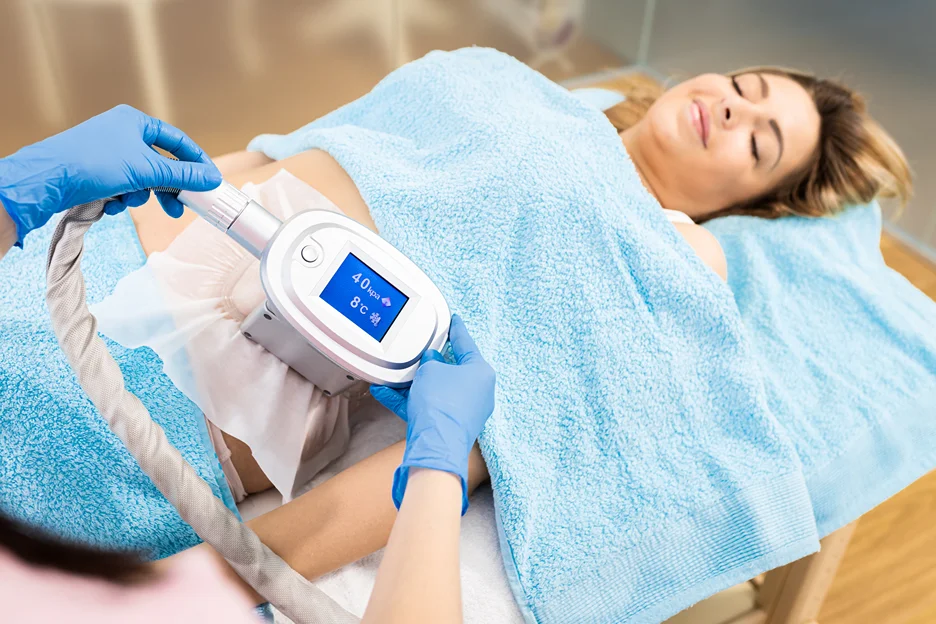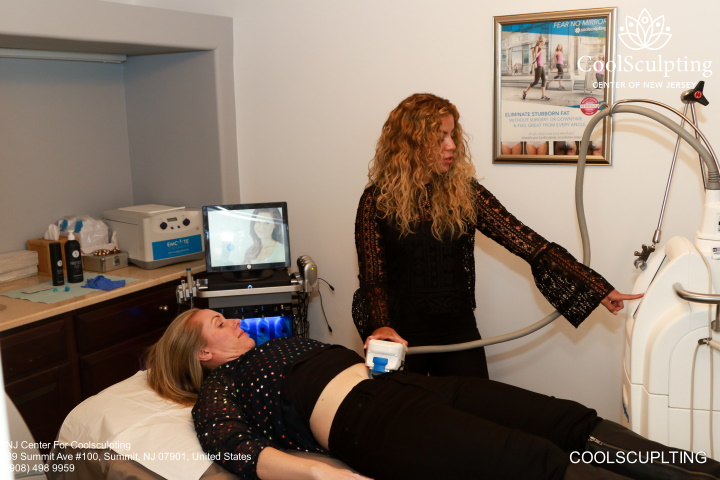Menu
(908) 628-1070

With new diets and procedures constantly emerging, many are still frustrated by stubborn fat pockets resisting diet and exercise. This has fueled popularity of fat-freezing procedures like CoolSculpting that promise non-surgical spot reduction. Though effective, in-office treatments are pricey.
At-home fat freezing belts aim to deliver similar fat-blasting results at a lower cost. However, inconsistent quality and misleading claims have made consumers skeptical. Do these belts actually work? The short answer is no.
Fat freezing leverages cryolipolysis technology to clinically reduce fat by freezing and destroying fat cells. But proper use is critical to seeing results. Read on to uncover the truth about these devices.
Up to 25% Fat Reduction With CoolSculpting: Treat Yourself Today!
Fat freezing leverages a process called cryolipolysis to damage fat cells through cold exposure. Pioneered by Harvard scientists Dieter Manstein, MD and R. Rox Anderson, MD in the early 2000's, cryolipolysis harnesses the power of precise and controlled cooling to selectively target fat cells.
During treatment, cooling panels or applicators are applied to the skin for 1-3 hours while chilled to specific subzero temperatures. This cold exposure causes fat cells to undergo crystallization, triggering apoptosis - the natural process of cell death.
While cold temperatures alone won't eliminate fat, cryolipolysis promotes a higher rate of apoptosis in fat cells by taking temperatures to just the right level. Meanwhile, other tissues like skin and muscle remain unharmed.
Over the next 2-4 months, the crystallized fat cells die off and are cleared away by the body's immune system. This results in a measurable reduction of the fat layer, typically in the range of 20-25%, while some state it's between 15-28%.
While the technology originated with medical CoolSculpting machines, companies have adapted it for at-home use through wearable fat freezing belts. These belt-style devices have removable cold packs that can be frozen and then inserted into special pockets. The adjustable belt wraps around a targeted area, holding the gel packs flush against the skin for hands-free treatment.
Through precise temperature control and special timers, fat freezing belts aim to mimic clinical cryolipolysis. But instead of shelling out thousands for in-office sessions, consumers can treat themselves from home for a price between $100-$300.
Even so, experts caution that FDA-cleared CoolSculpting delivers vastly superior, consistent results compared to the majority of consumer-grade devices.

With obesity impacting over 40% of American adults, the allure of freezing away stubborn fat while also losing weight is certainly compelling. But can fat freezing really deliver meaningful, lasting results comparable to diet and exercise? Or is it just the latest gimmicky fat loss fad? Let's examine what the research reveals.
So while measurable fat layer reduction does occur, studies confirm fat freezing treatments alone won't cause overall weight loss or lower BMI. By using freezing to spot-reduce localized fat bulges, body contours can be refined and slimmed. However, larger-scale weight management requires dietary changes and increased activity.
Professional fat freezing relies on precise, controlled cooling at optimal subzero temperatures applied through direct-contact vacuum applicators. This maximizes fat cell damage while minimizing undesirable side effects.
Freeze belts attempt to recreate these conditions at home using gel pack inserts chilled in the freezer. But limitations exist in their level of temperature control, skin contact, and overall clinical effectiveness compared to in-office treatments.
Mild inflammation from cold exposure can also temporarily increase measurements. More rigorous data is needed to better understand long-term outcomes from at-home cryolipolysis devices.
For more dramatic fat reduction, clinical CoolSculpting still reigns superior since, for one, there are actual studies that back it up.
As non-invasive devices applied externally to the skin, fat freezing belts carry far less risk than surgery. Still, improper use can lead to side effects like redness, bruising, pain, and other cold-induced issues. Here are some key safety considerations:
Remember, fat freezing belts haven't gone through the same rigorous FDA testing as CoolSculpting. Quality and safety standards vary widely among products. Seek out reputable companies with established track records.
Introduce belt usage slowly while carefully observing your body's response. With judicious use, most people tolerate belts reasonably well allowing for safe home treatments.
Multiple other options exist for those seeking spot fat reduction, each with their own upsides and downsides.
Here's how leading alternatives stack up against fat freezing belts:
| Method | Description and Pros/Cons |
| Liposuction | Gold standard for fat removal Dramatic contour changeRequires anesthesia and recoveryHigher cost and risks than non-invasive options |
| CoolSculpting | Original fat freezing procedure Reduces localized fat up to 28%Minimal downtimeSuperior, lasting results vs. home devicesSignificant cost for multiple treatments |
| Thermage | Uses radiofrequency for fat cell disruptionNo fat removalMild results compared to fat freezingMultiple sessions required |
| Ultrasound Cavitation | Ultrasound waves rupture fat cellsLittle evidence validating efficacyPossible skin sensitivity and nerve impact |
| Diet and Exercise | Cannot spot-reduce fat pocketsRequire significant lifestyle changesLong-term dedication needed |
As always, manage expectations, practice appropriate safety precautions, and incorporate them into an overall healthy lifestyle.
While fat freezing belts may seem appealing for non-surgical spot fat reduction, current research cannot substantiate claims about their efficacy or safety. There are no rigorously controlled studies proving these devices successfully freeze and eliminate fat cells when used as directed.
Without concrete before and after photographic evidence or measurable fat layer reduction data, consumers have no guarantees that fat freezing belts provide any meaningful improvement in body contours or fat loss. The level of cold exposure needed to trigger cryolipolysis fat cell death may not be consistently achievable at home.
Although some modest subjective slimming has been anecdotally self-reported, there are no objective, quantified fat reduction results from controlled clinical testing of fat freezing belts. Lacking FDA oversight and approval, fat freezing belts remain an unproven technology.
For consumers struggling with diet and exercise-resistant fat pockets, fat freezing belts unfortunately cannot yet be recommended over lifestyle changes due to the complete lack of verifiable evidence for their fat reducing efficacy and safety at this time.

Fat freezing does work, but you have to rely on proven treatments to capitalize on its benefits - not more needless headaches! With diligent lifestyle habits and realistic expectations, over time, you may notice your body contour start to shift towards a slimmer, sleeker shape.
Contact NJ Center for CoolSculpting to know if fat freezing is right for you and clear all the lingering doubts.
Start working with proven safe and effective treatments now!
Up to 25% Fat Reduction With CoolSculpting: Treat Yourself Today!